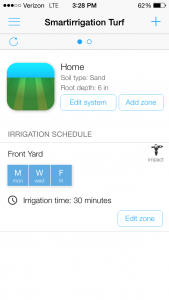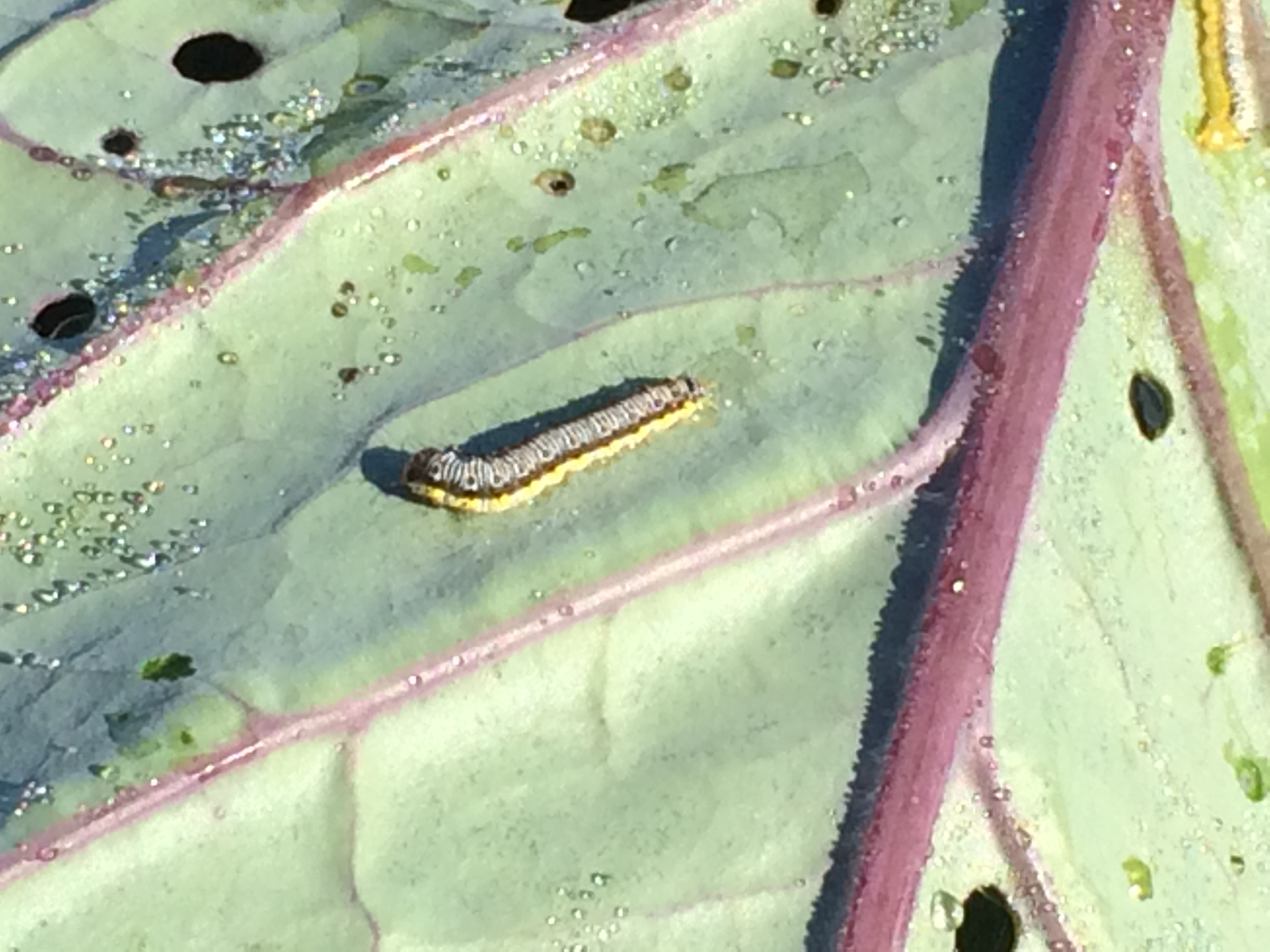
by Blake Thaxton | Oct 21, 2014
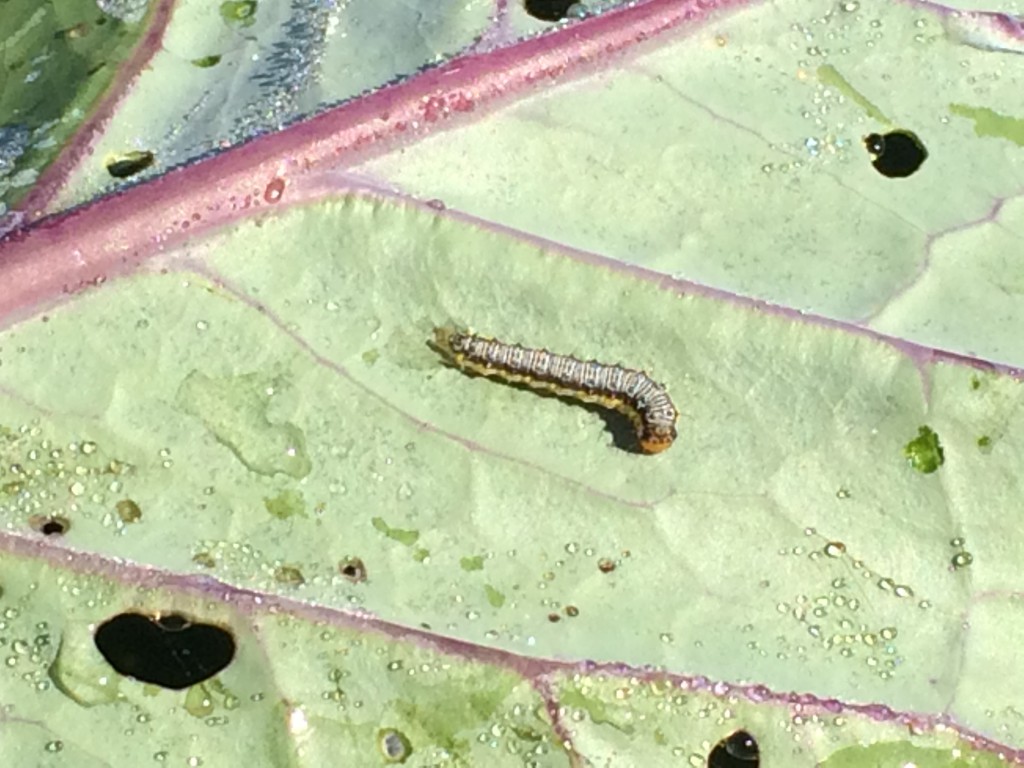
Cross-Striped Cabbageworm – Photo credits: Blake Thaxton
Panhandle gardeners have their fall gardens planted and our growing rapidly. What the gardeners may start noticing is shotgun damage to cabbage leaves in their garden. The suspect for this damage is the Cross-Striped Cabbageworm.
The Cross-Striped Cabbageworm have black and white markings on the back of the caterpillar and a bright yellow stripe on each side. This particular caterpillar feeds in cluster and maybe limited to a hot spot of a few plants in the garden or production area. They feed on tender parts of the cabbage including the terminal bud and can feed into the head once heading is initiated.
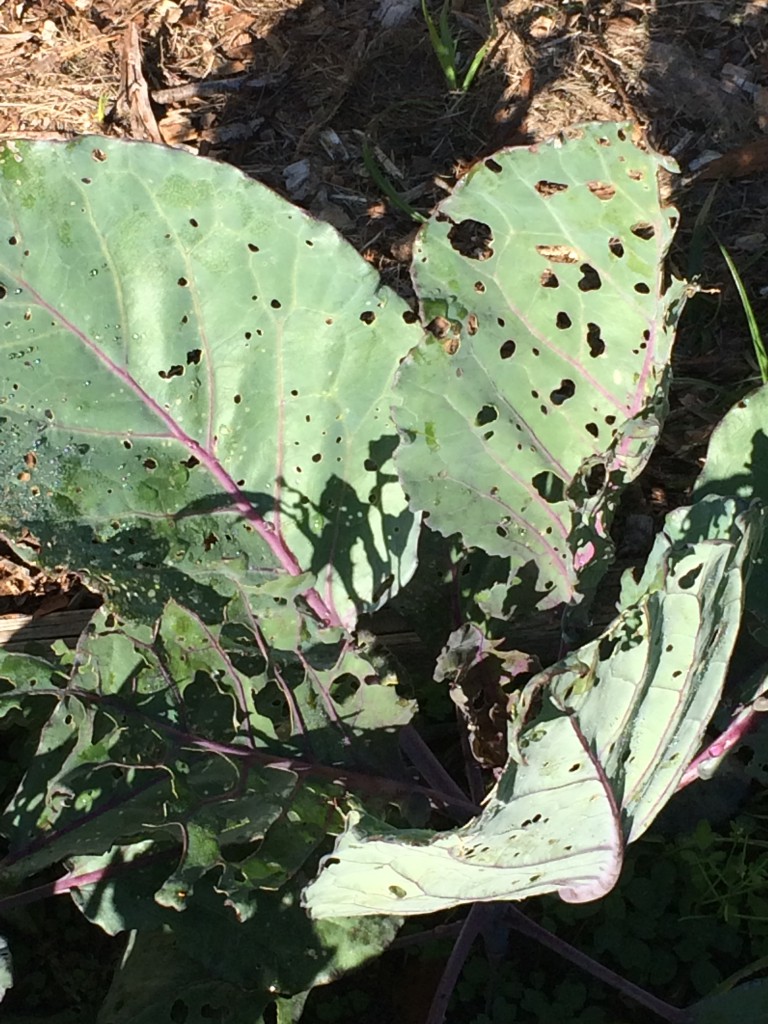
Damage caused by Cross-Striped Cabbageworm – Photo Credit: Blake Thaxton
With all pest control the three levels of control should be used:
- Level 1: Systems-based practices – weed control of pest host weeds
- Level 2: Mechanical and physical practices – A barrier, such as a light cloth that still allows enough light, can be used when the plants our young to prevent the moths from laying eggs on the cabbage.
- Level 3: Soft chemical & other materials – Bt (Bacillus thuringiensis) products can be used on the small-sized caterpillars. Harsher chemicals can kill the adults but in a garden situation picking them off and disposing them in a bucket of soapy water will do the trick as well.
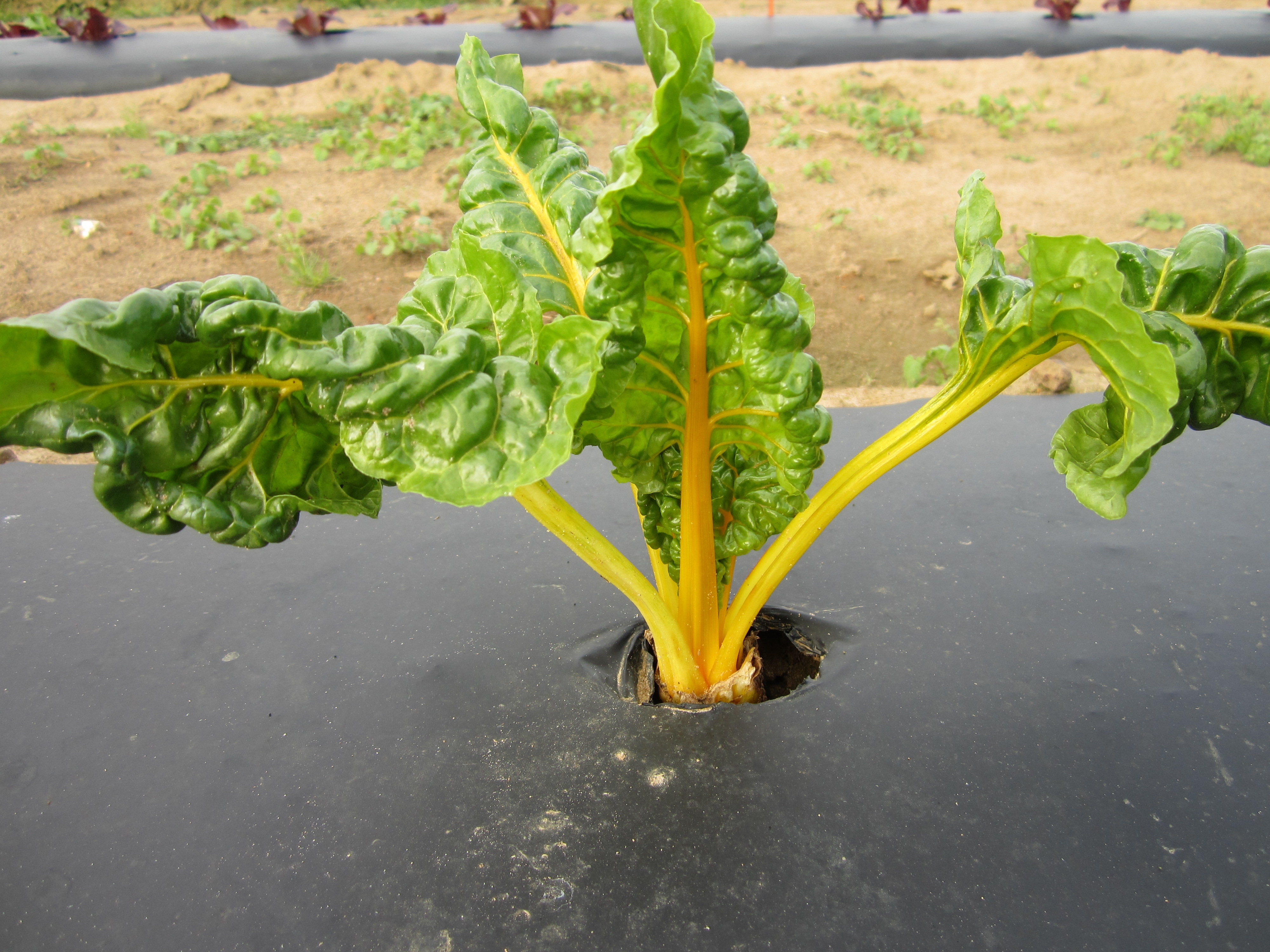
by Blake Thaxton | Aug 12, 2014
Color can make a landscape. Color highlights features of the landscape and draws the eye as a focal point itself. Spring color is dominated by lush new green growth, Summer brings on flowers of all kind, and fall brings the spectacular show of foliage.
[important]A new suggestion: use vegetable crops as fall color![/important]
Fall and winter vegetable crops for the panhandle of Florida bring a different hue of colors that can be utilized in the landscape. Let’s walk through a few that you may want to start seed for to brighten up your fall garden.
Swiss Chard
Swiss Chard brings several colors to our finger tips. Reds, Whites, Greens, and Yellows are all available from different varieties of these crops. Not only do they bring great color to the landscape but they also are sometimes referred to as the “Champagne” of greens. They can be directly seeded or transplanted and should be planted 6-12 inches apart.

Swiss Chard Varieties. photo credit – Blake Thaxton
Broccoli & Cauliflower
Broccoli brings a blue/green foliage and Cauliflower various colored heads. Both can bring great color to the landscape and allow for something delicious to eat in the very near future. Broccoli and Cauliflower transplants should be used for planting. Broccoli and cauliflower should be given plenty of room with approximately 24 inches between plants.
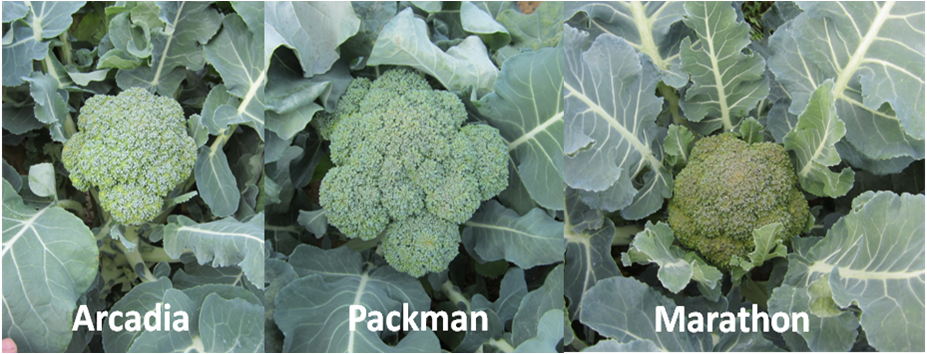
Broccoli Varieties. photo credit – Blake Thaxton
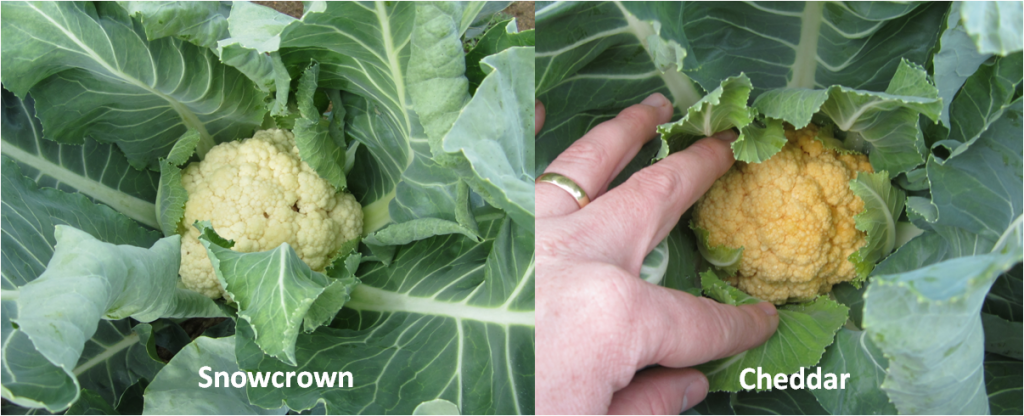
Cauliflower Varieties. photo credit – Blake Thaxton
There are many other crops to consider for fall color such as Lettuces, Cabbages, Kale, Etc. Comment below with other vegetable crops that can be used for fall color.
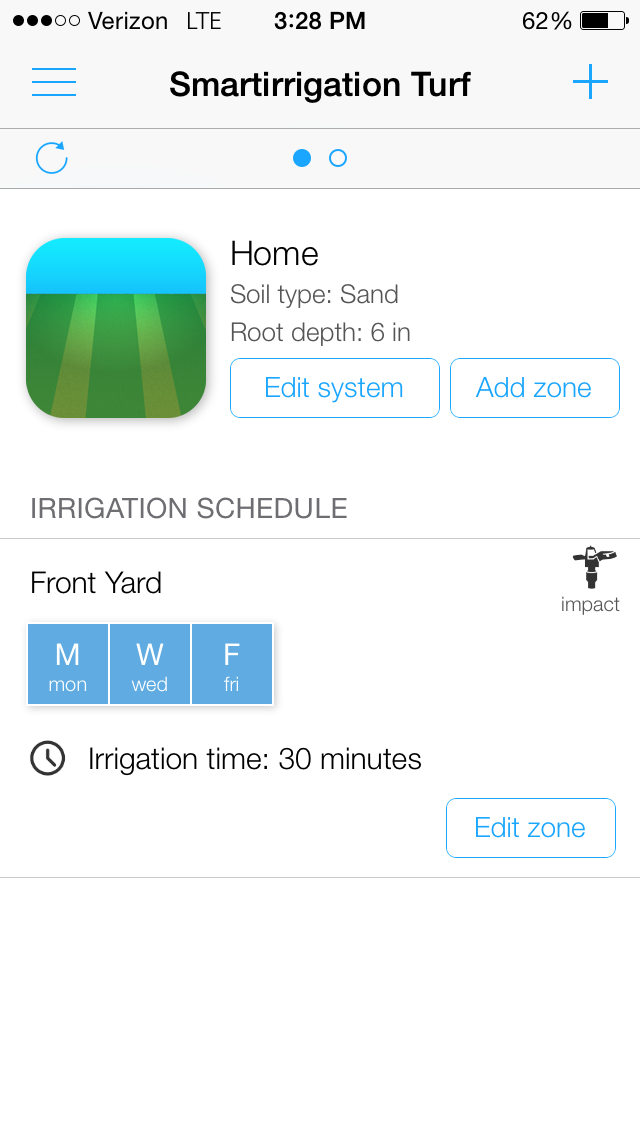
by Blake Thaxton | Jun 10, 2014
In this age of tablets, smart phones, and whatever they come up with next, even the gardener can benefit from new technology. Although gardening and landscaping to beautify our surroundings is a way to connect with the past, there are many new tools that are ready to help! Here are a few web sites and phone apps that may prove useful to the gardener.
Sod Solutions has made it easy to know how much sod you need to order by using a mapping system to create overlays that measure square footage. Measuring square footage can prove tough for irregularly shaped beds or turf lawns. This website can help measure accurately so one can also apply the correct amount of herbicides, pesticide, or fertilizer. The website can be difficult for the technology challenged among us. An easy solution is to find anyone under the age of 15 and they should be able to help!
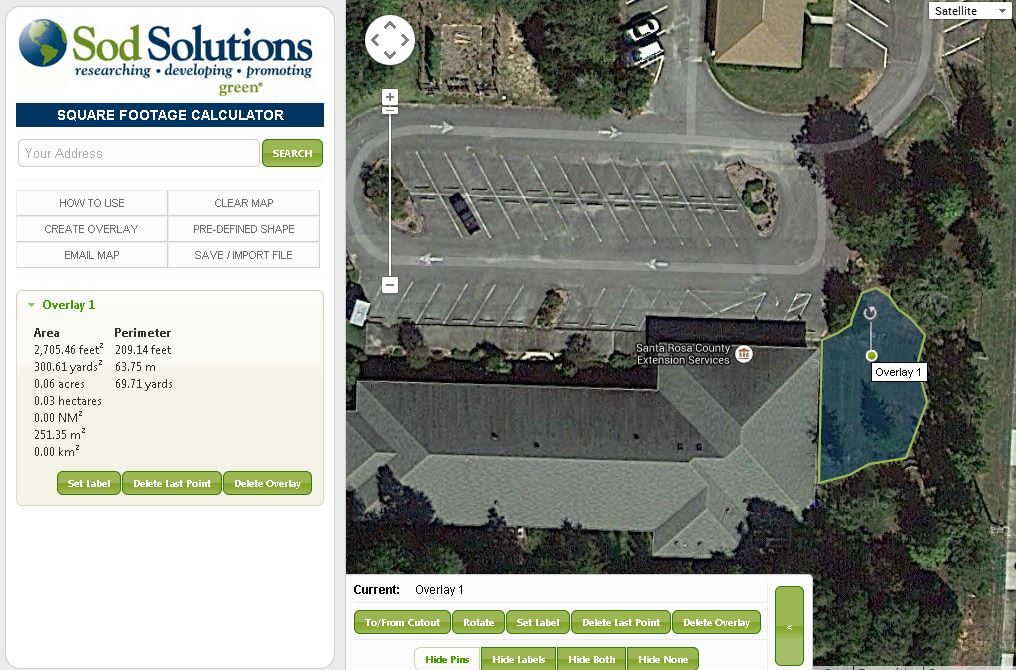
The Smartirrigation Turf app is designed to help homeowners with automatic irrigation systems in scheduling their watering times correctly. This app takes everything into account from soil type to local weather conditions. For example, you set a watering schedule for Zone X of 15 minutes every Monday, Wednesday, and Friday. Then, it does not rain for an extended period of time. Because your lawn does not get the supplemental rain that was predicted, the app may tell the home owner to change the setting to 25 minutes. To read more about using the app correctly, click on the link above.
Other apps that might prove useful are:
- NCSU Lawn Care App – An App by North Carolina State University all about lawn care.
- SoilWeb for Iphone – Produced by The California Soil Resource Lab that will tell you what kind of soil you are standing on.
- Leaf Snap – Developed by Columbia University, University of Maryland, and Smithonian Institution. The app uses visual recognition software to identify plants by taking pictures of its leaves.
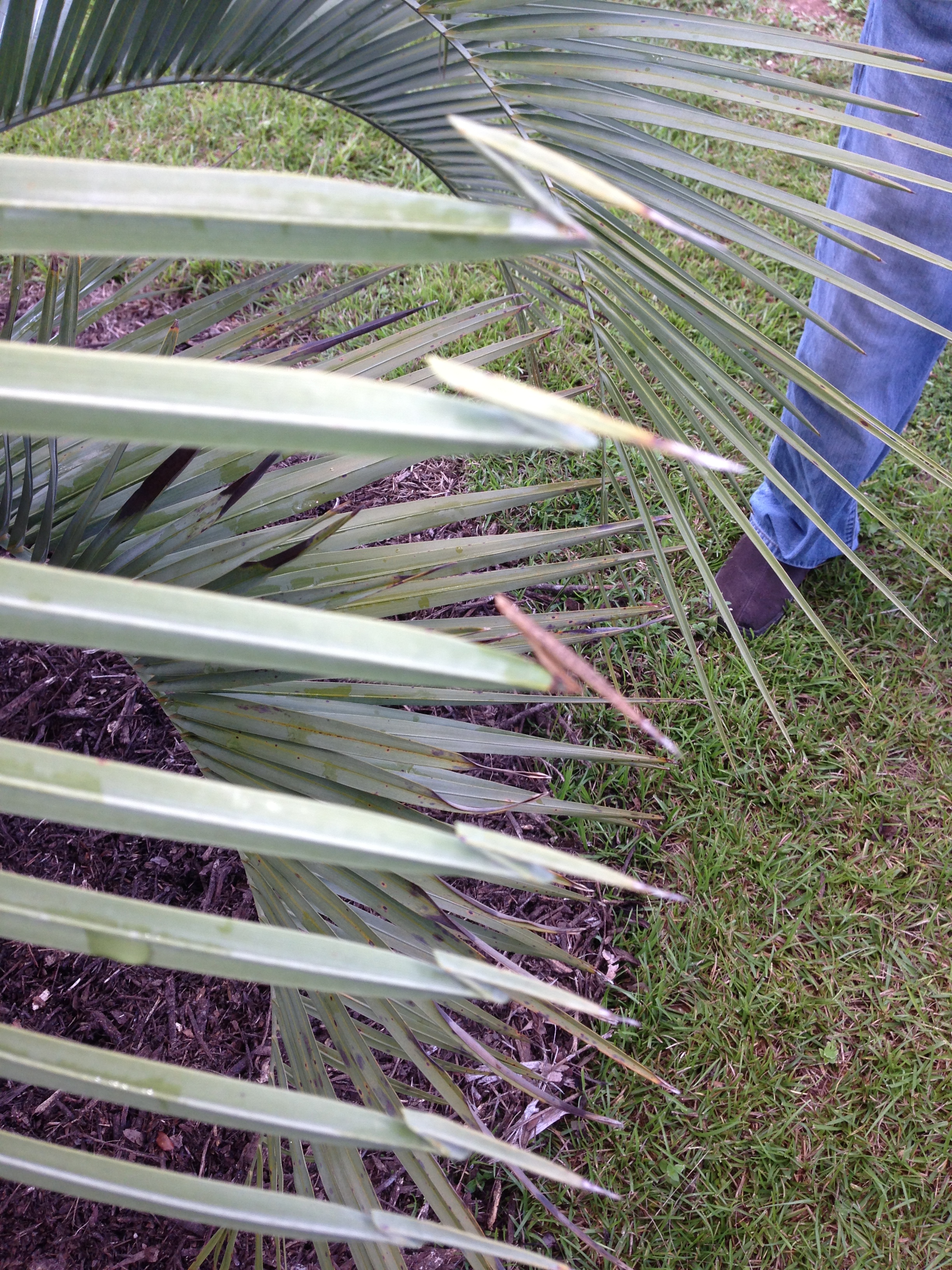
by Blake Thaxton | May 6, 2014
Palms can be difficult to manage in Northwest Florida. To have healthy palms it is important to think about possible cold temperatures, disease, and nutrient needs of palms. The panhandle of Florida was blasted with cold this winter and it is easy to see the effects on the palms. There are many palms throughout Northwest Florida which appear or are dead. This article will give information on several of the pesky palm problems observed throughout the region and some recommendations to help!
Cold damage is evident right now from this past winters’ very harsh temperatures. Some recommendations to help alleviate this problem include selection of the proper species. Some palms are not suited for colder temperatures and this must be taken in to account or you will continue to have problems even during mild winters. Look at the publication that has a table of palm suited for north Florida: Palms for North Florida
Next, develop a plan of action if your palm has been effected by cold damage. As has been seen throughout the panhandle, freeze damage can make an entire palm canopy turn brown and desiccate (dry out). It can even go as far as killing the spear leaf (The newly emerging palm leaf that resembles a spear). Even if the spear leaf has died and easily pulls out of the canopy, the palm may not be dead. If the meristem (the area of replicating cells that new leaves emerge from) survives the palm will also survive. If the spear leaf does die, give the palm 5-6 months to send out a new leaf before declaring it dead.
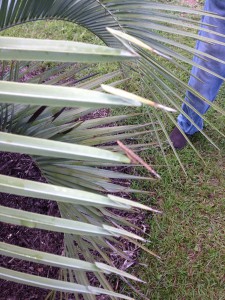
Hook-Leaf caused by an acute Boron deficiency
Another issue that may arise in the near future with the recent heavy rains is Boron deficiency of palms. Boron deficiency can be cause by leaching of soil Boron out of the root zone by heavy rain falls or heavy irrigation. When Boron has been leached from the soil it causes an acute (temporary) deficiency that will only last until microorganisms have time to break down more soil organic material that releases more Boron to the palm. Symptoms include small and crumpled new leaves, angular leaf tips, “hook-leaf”, and sometimes the stem bends sharply to one side. The symptoms won’t be visible for 4 to 5 months as the deficiency affects the leaf during development prior to its emergence. By the time it is seen the problem has probably already been corrected.
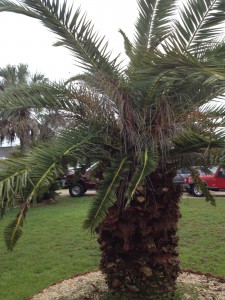
Chronic Boron Deficiency
Also, chronic (long-lasting) Boron deficiency problems can occur on palms. This deficiency is usually caused by soil drying and high soil pH. If there is a chronic Boron deficiency a drench can be applied to correct the problem. Learn more about Boron Deficiency of Palms
by Blake Thaxton | Apr 8, 2014

Currently, there is an heirloom tomato variety trial being conducted in a high tunnel  structure at the UF/IFAS West Florida Research and Education Center. Seven heirloom tomato varieties are being evaluated, along with one hybrid variety, for early season high tunnel production in the western panhandle of Florida. Now is a chance for vegetable producers and tomato garden enthusiasts to see the trial and get the most up to date production advice from UF/IFAS specialists and extension agents. Join us for the workshop, Tomatoes at Twilight!
structure at the UF/IFAS West Florida Research and Education Center. Seven heirloom tomato varieties are being evaluated, along with one hybrid variety, for early season high tunnel production in the western panhandle of Florida. Now is a chance for vegetable producers and tomato garden enthusiasts to see the trial and get the most up to date production advice from UF/IFAS specialists and extension agents. Join us for the workshop, Tomatoes at Twilight!
Topics to be discussed:
• General Tomato Production
• High Tunnel Tomato production
• Heirloom Tomatoes
• Water & Nutrient Management
• Disease Control











